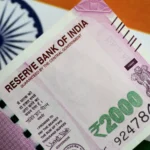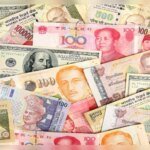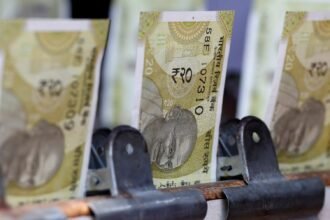The Japanese Yen (JPY) extends its steady intraday pullback from the vicinity of a one-week high against a broadly rebounding US Dollar (USD), though the downside potential seems limited. The global risk sentiment remains supported by the prospects for lower US interest rates and hopes for a Russia-Ukraine peace deal. Moreover, concerns about Japan’s worsening fiscal position, amid Prime Minister Sanae Takaichi’s pro-stimulus stance, turn out to be key factors prompting some intraday selling around the safe-haven JPY.
Meanwhile, investors remain alert amid the possibility that Japanese authorities could step in to stem any further weakness in the domestic currency. Adding to this, reviving bets for an imminent interest rate hike by the Bank of Japan (BoJ) in December might hold back the JPY bears from pacing aggressive bets. The USD, on the other hand, might struggle to attract any meaningful buyers amid dovish Federal Reserve (Fed) expectations, warranting some caution before positioning for any further recovery for the USD/JPY pair.
Japanese Yen bulls seem hesitant as positive risk tone offset BoJ rate hike bets and intervention fears
- The recent decline in the Japanese Yen prompted Finance Minister Satsuki Katayama to issue the strongest warning to date by specifically saying that the government would take appropriate action against excessive market volatility. Moreover, comments from Takuji Aida, a member of a key government panel, also explicitly raised the possibility of an intervention to counter the negative economic impact of a weak JPY.
- Reuters reported on Wednesday that the Bank of Japan over the past week has intentionally shifted messaging to highlight the inflationary risks of a persistently weak JPY, suggesting that a December rate hike remains a live option. This follows a meeting between Prime Minister Sanae Takaichi and BoJ Governor Kazuo Ueda last week, which appeared to remove political objections to rate hikes from the new administration.
- Furthermore, BoJ board member Asahi Noguchi reiterated this Thursday that if economic activity and prices develop in line with the forecast, the central bank will gradually adjust the degree of monetary accommodation. That means raising policy interest rate at a pace that will make it possible to smoothly reach the neutral interest rate when 2% inflation target is achieved, Noguchi added further.
- Meanwhile, data released on Wednesday showed that Japan’s Services Producer Price Index, which tracks the price companies charge each other for services, rose 2.7% in October from a year earlier. This suggests that Japan was on the cusp of durably meeting its 2% inflation target and backs the case for a further BoJ policy tightening. This, in turn, assists the JPY to regain some positive traction following the overnight slide.
- Japan’s cabinet approved a ¥21.3 trillion economic stimulus plan last Friday, marking the first significant policy initiative under PM Sanae Takaichi. This also represents the largest stimulus since the COVID pandemic, which fueled anxiety about the supply of new government debt and had been a key factor behind the recent steepening of Japan’s yield curve. This, along with the risk-on mood, warrants caution for the JPY bulls.
- The US Dollar, on the other hand, drops to an over one-week low during the Asian session on Thursday amid the growing acceptance that the Federal Reserve (Fed) will lower borrowing costs again in December. Even a mixed set of US economic indicators released this week did little to alter the outlook, which continues to undermine the Greenback and contributes to the USD/JPY pair’s intraday downfall to the 155.70 region.
- The prospects for lower US interest rates, along with hopes for a peace deal between Russia and Ukraine, remain supportive of the upbeat market mood. This keeps a lid on any further appreciation for the safe-haven JPY and helps limit the downside for the USD/JPY. Traders also seem reluctant to place aggressive directional bets and opt to wait on the sidelines amid thin trading volumes on the back of a holiday in the US.
USD/JPY might struggle to make it through 100-hour SMA pivotal hurdle, around 156.70

The overnight move up faced rejection near the 100-hour Simple Moving Average (SMA), which is currently pegged near the 156.70 region and should act as a key pivotal point for the USD/JPY pair. A sustained strength beyond should allow spot prices to reclaim the 157.00 mark and climb further toward the 157.45-157.50 intermediate hurdle en route to the 158.00 neighborhood, or the highest level since mid-January, touched last week.
On the flip side, weakness below the overnight swing low, around the 155.65 region, should pave the way for deeper losses and drag the USD/JPY pair to the 155.00 psychological mark. A convincing break below the latter will be seen as a fresh trigger for bearish traders and set the stage for an extension of a one-week-old downtrend from the vicinity of the 158.00 round figure.
Risk sentiment FAQs
In the world of financial jargon the two widely used terms “risk-on” and “risk off” refer to the level of risk that investors are willing to stomach during the period referenced. In a “risk-on” market, investors are optimistic about the future and more willing to buy risky assets. In a “risk-off” market investors start to ‘play it safe’ because they are worried about the future, and therefore buy less risky assets that are more certain of bringing a return, even if it is relatively modest.
Typically, during periods of “risk-on”, stock markets will rise, most commodities – except Gold – will also gain in value, since they benefit from a positive growth outlook. The currencies of nations that are heavy commodity exporters strengthen because of increased demand, and Cryptocurrencies rise. In a “risk-off” market, Bonds go up – especially major government Bonds – Gold shines, and safe-haven currencies such as the Japanese Yen, Swiss Franc and US Dollar all benefit.
The Australian Dollar (AUD), the Canadian Dollar (CAD), the New Zealand Dollar (NZD) and minor FX like the Ruble (RUB) and the South African Rand (ZAR), all tend to rise in markets that are “risk-on”. This is because the economies of these currencies are heavily reliant on commodity exports for growth, and commodities tend to rise in price during risk-on periods. This is because investors foresee greater demand for raw materials in the future due to heightened economic activity.
The major currencies that tend to rise during periods of “risk-off” are the US Dollar (USD), the Japanese Yen (JPY) and the Swiss Franc (CHF). The US Dollar, because it is the world’s reserve currency, and because in times of crisis investors buy US government debt, which is seen as safe because the largest economy in the world is unlikely to default. The Yen, from increased demand for Japanese government bonds, because a high proportion are held by domestic investors who are unlikely to dump them – even in a crisis. The Swiss Franc, because strict Swiss banking laws offer investors enhanced capital protection.





















